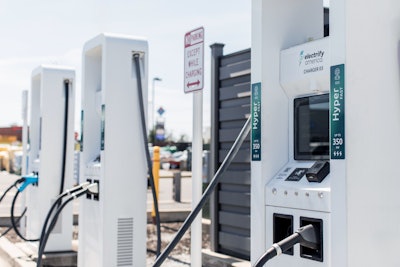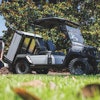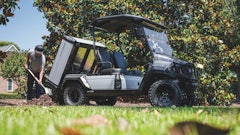
While electric vehicles (EV) dominate the sustainability market, growth hasn’t been exactly as desired. J.D. Power recently adjusted its market share forecast down from 12% to 9% for 2024-2025. The major selling factor for EVs is the reduction in fueling costs, but that has become increasingly questionable due to volatile energy prices. On top of that, the charging infrastructure creates some concerns. A recent poll of fleet industry professionals showed the charging infrastructure as being the main hindrance to fleet electrification.
On Aug. 27, the Biden-Harris Administration announced $521 million in grants for building out EV charging infrastructure, which will include the development of 9,000-plus charging ports, according to the U.S. Department of Transportation. The administration has faced criticism over the slow-roll process of addressing the charging infrastructure, but new complications have arisen as charging stations are being targeted for theft. As for equipment, the landscaping industry has pushed back on a growing ban of gas-powered mowers and leaf blowers, citing that their battery-powered counterparts are both more costly and less effective.
That said, let’s take a closer look at upcoming EV adoption challenges and what landscaping fleets can do to adapt.
Policy and procurement challenges
With the upcoming election and each party having a different plan for emissions regulations, it’s hard to say whether emissions regulations will soften or continue on as is, presenting yet another challenge to sustainability planning. According to Trump’s Agenda 47, his administration would invest in U.S. energy dominance, cancel the EV mandate and cut regulations. This could ease energy price woes and allow fleets to switch to electric vehicles and equipment on a timeline that meets their business and budgetary needs. His position on tariffs, however, may ultimately raise the cost of EVs.
Harris's policy stances outlined on her campaign page would keep with the current Biden administration, which extended Trump's Section 301 tariffs on Chinese imports. This also includes a 100-percent tariff on China-made EVs, a decision that has so far been delayed.
Ultimately either party’s tariff stance could make EV and EV component procurement trickier and more expensive, though getting rid of emissions regulations would allow for more thoughtful, less rushed procurement strategies while price controls would exacerbate difficulties.
Adapting to meet sustainability goals
Whether it’s a business initiative to meet sustainability goals or the need is simply based on emissions regulations, here are a few tips to help landscaping fleets navigate the challenges.
- Keep up with policies: Stay on top of the policies proposed by presidential candidates, but also look into those of state and local representatives gearing up for election.
- Source from U.S. manufacturers: When possible, try to source electric vehicles and equipment from U.S. manufacturers to avoid price increases caused by tariffs and help ensure smoother procurement.
- Talk with peers: Talk with industry peers already using electric vehicles and equipment to get their first-hand experience. They may have suggestions for specific brands or models that have worked better for them and those that have not.
- Make a strategic plan: Adopting poor performing vehicles and equipment can cost your company thousands of dollars, and the same applies with their electric counterparts. Before you buy: research, research, research. That, along with gaining insights from industry peers, can help you choose the right vehicle or piece of equipment for its intended application and which also meets the business’ needs.
- Track cost and efficiency: Performance is key in understanding an asset’s total cost of ownership versus the value it provides. This includes tracking service and inspection histories, usage rates and charging trends. If an asset is spending more time charging than it is being used, there could be a performance issue. Keeping track of any downtime-related issues makes it easier to address and remedy their cause for improved asset value.
Sustainability in the landscaping industry has been hit or miss, but understanding impending policies and talking with industry peers can help businesses make strategic adoption plans that work for them. With new assets procured, using a comprehensive spreadsheet to track maintenance or leveraging a fleet optimization platform with charge tracking can help fleets spot performance issues and their cause.





















